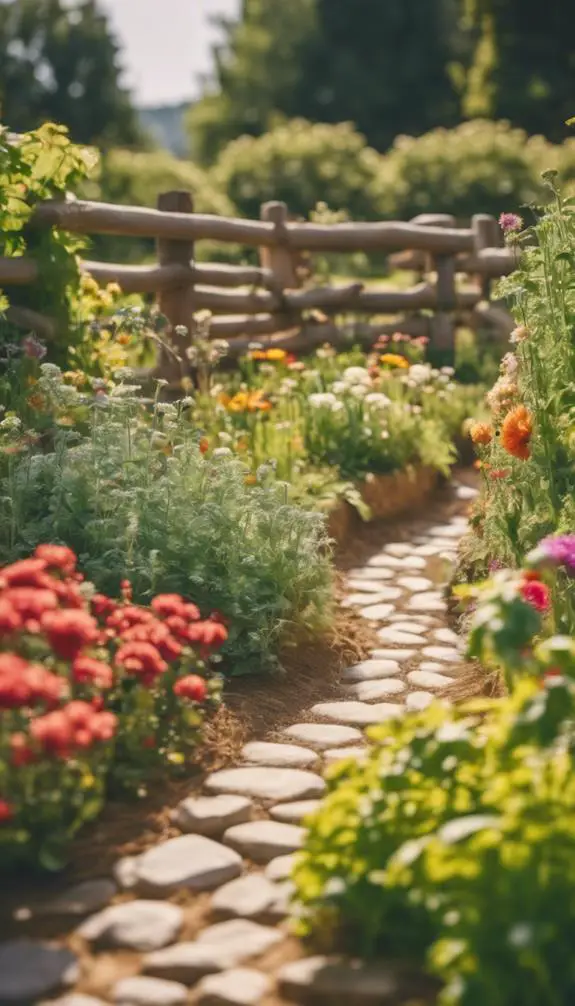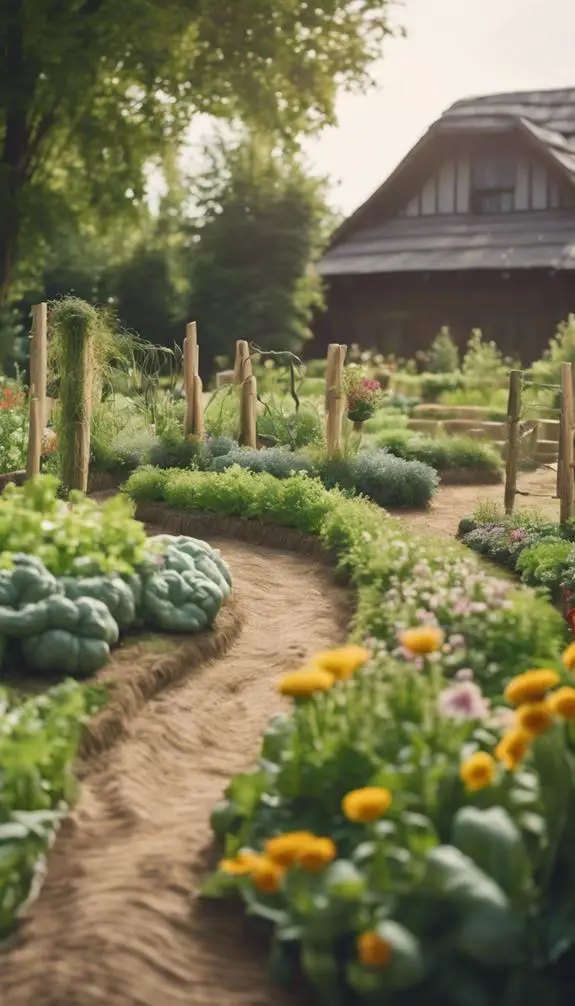As you consider alternative gardening methods, you might be wondering if straw bale gardening is right for you. This innovative approach offers a unique set of benefits, from improved soil structure to increased crop yields. But before you start, crucially, you need to understand the basics. What makes a straw bale suitable for gardening, and how do you prepare it for planting? Which crops thrive in this environment, and what are the secrets to a successful harvest? As you ponder these questions, you're likely to realize that straw bale gardening is more than just a novelty – it's a game-changer.
Summary
- Select fresh, high-quality straw bales with a dense structure and uniform color for optimal plant growth and nutrient release.
- Condition the bales by introducing moisture and heat to stimulate decomposition, creating a nutrient-rich environment for plants.
- Plant a variety of crops, including cool-season and warm-season vegetables, taking into account climate considerations and soil temperature.
- Implement efficient watering and irrigation systems, such as drip irrigation or soaker hoses, to maintain optimal soil moisture levels.
- Design a visually appealing and functional garden layout with thoughtful bale spacing, pathways, and access points for easy maintenance and harvesting.
Benefits of Straw Bale Gardening
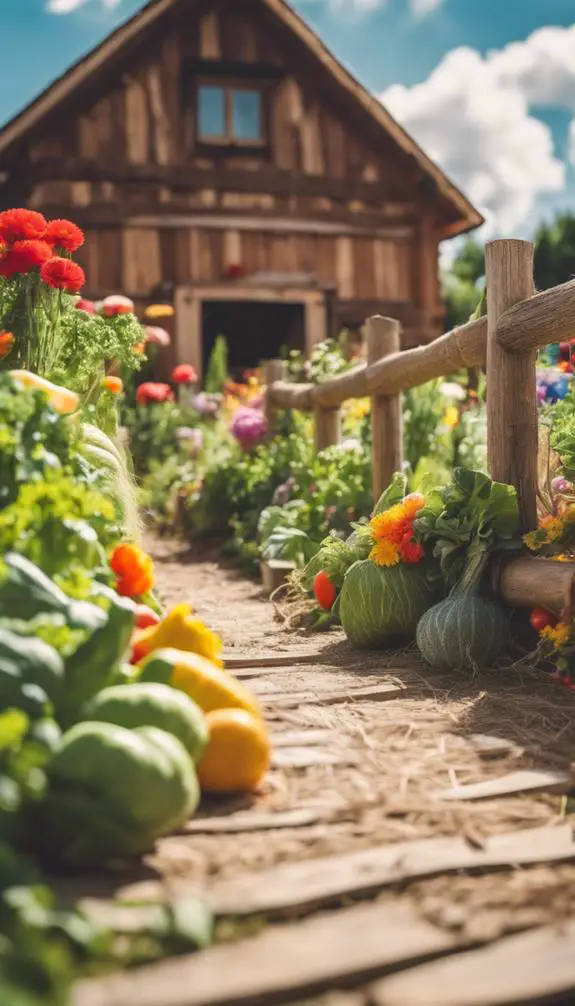
Several hundred gardeners have already discovered the advantages of straw bale gardening, and you can too.
By using straw bales, you'll create a nutrient-rich environment that fosters healthy plant growth. Straw bale benefits include improved soil structure, increased water retention, and reduced soil compaction.
As the bales break down, they provide a slow release of nutrients, eliminating the need for fertilizers. You'll also notice a significant reduction in weeds, as the straw Bale's dense texture prevents them from germinating.
With straw bale gardening, you can expect increased crop yields, better plant health, and a reduced environmental impact.
Choosing the Right Straw Bales

When selecting straw bales for your garden, you'll want to inspect their condition carefully, as this factor is vital to the success of your project.
You'll also need to ponder the type of straw, as some varieties are better suited for gardening than others.
Additionally, the age of the bales can impact their ability to support plant growth, so selecting bales that are fresh and of high quality is paramount.
Bale Condition Matters Most
You're about to venture on a straw bale gardening adventure, but before you start, inspect the bales you're about to use.
Freshness matters; look for bales with a sweet, earthy aroma, indicating minimal mold and microbial growth. Avoid musty or sour-smelling bales, as they may be too far gone.
Check for signs of damage, like torn or broken strings, and verify the bales are tightly bound to maintain their shape.
Proper bale handling is vital; gentle handling will help prevent damage and preserve the bale's structure. A well-maintained bale will break down more evenly, providing a consistent growing environment for your plants.
Straw Type Is Key
Because straw bales can be made from various types of straw, it's vital to choose the right one for your garden.
The quality of straw directly impacts the performance of your straw bale garden. Look for bales made from dense, dry straw with minimal weed seeds.
Avoid bales with musty smells or visible mold, as they can harbor diseases. Freshness matters too – opt for bales that are less than a year old to guarantee they haven't started to break down.
High-quality straw will provide a better environment for your plants to thrive. By selecting the right straw type, you'll set your garden up for success and enjoy a bountiful harvest.
Age of Bales Counts
Freshly cut straw bales, typically with a lighter color and a sweet, earthy aroma, are ideal for gardening, as they break down more efficiently and support healthy plant growth.
You want bales that are less than six months old, as older bales may have already started to decompose, reducing their fertility potential.
When selecting bales, look for those with a tight, compact bundle and a fresh, greenish-yellow color.
Avoid bales with signs of mold, mildew, or rodent damage.
Proper bale storage is also vital; keep them dry and protected from the elements to preserve their freshness.
Preparing Straw Bales for Planting

To prepare straw bales for planting, start by selecting bales with a tight, compact structure and a uniform straw color, as these will break down more easily and consistently.
Next, you'll need to condition the bales, which involves introducing moisture and heat to stimulate decomposition. This process, known as straw bale prep, typically takes 10-14 days and involves regular watering and monitoring of internal temperatures.
As the bales begin to break down, you'll notice a rise in temperature and a change in color and texture. This indicates that the bales are ready for planting.
Proper bale conditioning is vital for creating a nutrient-rich environment for your plants to thrive.
Selecting the Best Crops to Grow
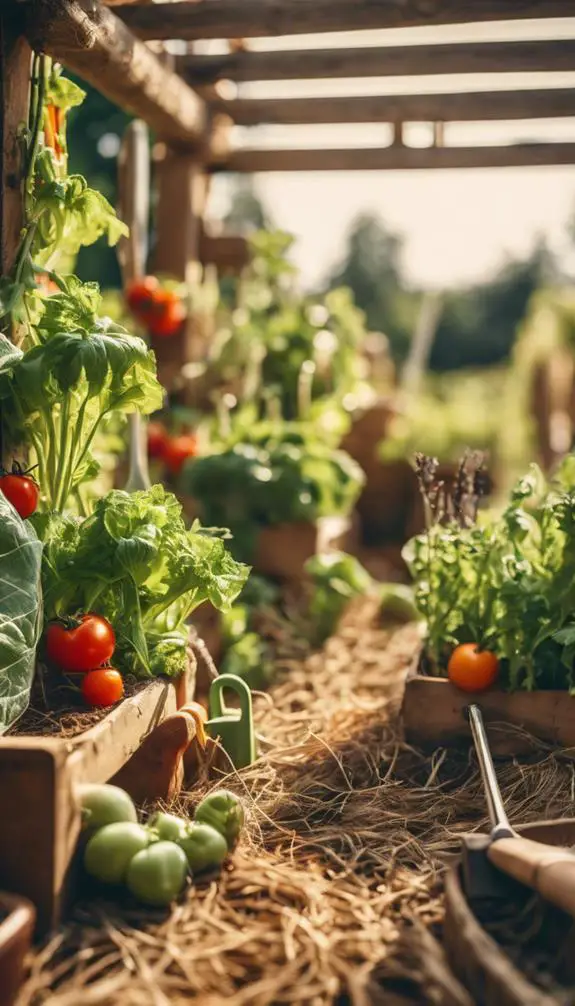
As you stand before your conditioned straw bales, you're likely wondering which crops will thrive in this unique environment.
Straw bale gardens offer a warm, moist, and well-draining medium perfect for a wide range of crops. When selecting crops, consider climate considerations such as temperature, moisture, and sunlight requirements.
Cool-season crops like broccoli, kale, and carrots excel in the cooler temperatures and consistent moisture of straw bale gardens.
Warm-season crops like tomatoes, peppers, and eggplants benefit from the warm microclimate and can be planted later in the season.
Implementing crop rotation strategies will guarantee a diverse and healthy harvest. Rotate crops from different families to avoid depleting specific nutrients and to reduce pest and disease buildup.
Planting in Straw Bales 101

With your straw bales conditioned and crops selected, it's time to get your hands dirty.
Planting in straw bales requires careful attention to detail to guarantee maximum growth. Begin by creating a shallow trench in the top of each bale, about 2-3 inches deep and 1-2 inches wide.
Add a handful of compost or fertilizer to the trench, then plant your seeds or seedlings at the recommended depth. Space them evenly, taking into account mature plant size.
Cover the roots with a thin layer of straw, then water gently. Bale gardening basics dictate that you'll need to keep the bales consistently moist, but not waterlogged, during the first few weeks after planting.
Proper straw bale preparation is key to a thriving harvest.
Watering and Irrigation Tips

You'll need to monitor soil moisture levels carefully, as straw bales can dry out quickly, especially during hot weather.
To guarantee your plants receive the right amount of water, consider installing an efficient watering system, such as a drip irrigation setup or soaker hose. By doing so, you'll be able to deliver water directly to the roots of your plants, reducing evaporation and runoff.
Soil Moisture Levels
Straw bale gardens require careful monitoring of soil moisture levels to guarantee ideal growth and prevent waterlogged or dried-out bales.
You'll want to keep the moisture levels between 20% and 60% to certify peak growth. To achieve this, use moisture meters or soil sensors to measure the moisture levels. These tools provide accurate readings, allowing you to adjust your watering schedule accordingly.
Visual inspections can also help; check for signs of moisture stress, such as wilting or yellowing leaves. By monitoring soil moisture levels, you'll be able to identify potential issues early on and take corrective action to maintain a healthy, thriving straw bale garden.
Efficient Watering Systems
Monitoring soil moisture levels is only half the battle; the next step is to implement an efficient watering system to deliver the right amount of water to your straw bale garden.
You'll want to weigh a drip irrigation system, which releases water directly to the roots of your plants, reducing evaporation and runoff. This targeted approach guarantees your straw bales receive the perfect amount of moisture.
Alternatively, sprinkler systems can be used to distribute water evenly across the garden bed. When choosing a sprinkler, opt for one with a low flow rate to prevent washing away the straw or compacting the soil.
Natural Pest Control Methods

Pests are inevitable visitors to your straw bale garden, but that doesn't mean you have to invite them to stay.
You can deter unwanted critters without harming the environment using natural pest control methods. Neem oil, derived from the seeds of the neem tree, is a potent insecticide that can be mixed with water and sprayed on your straw bales to repel pests.
Another effective method is garlic spray, which can be made by blending garlic with water and straining the mixture. Spray it on your plants to keep aphids, whiteflies, and other pests at bay.
Both neem oil and garlic spray are non-toxic and biodegradable, making them perfect for your eco-friendly straw bale garden.
Straw Bale Garden Layout Ideas
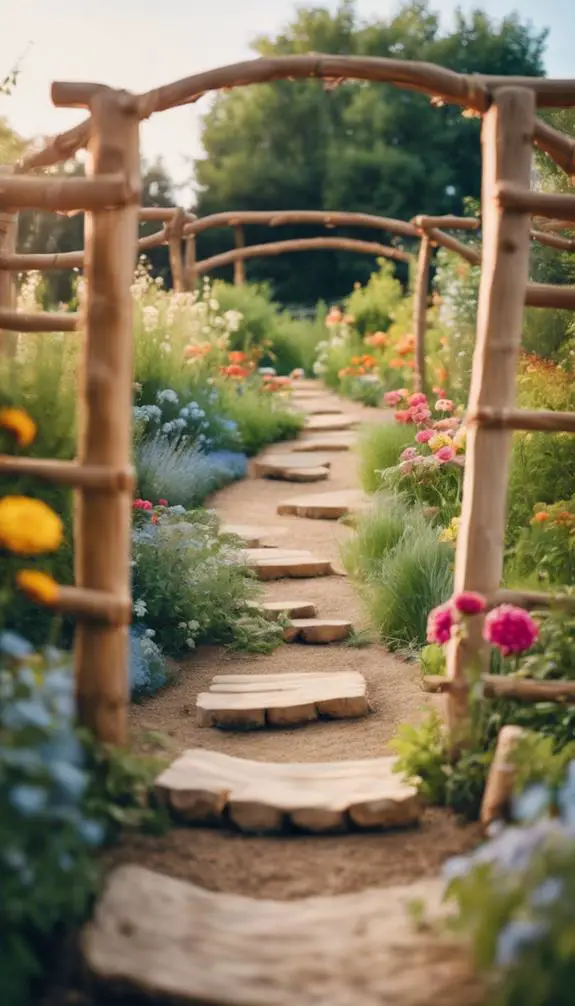
You'll want to ponder the visual appeal and functionality of your straw bale garden by planning the layout carefully.
Think about the spacing and pattern of your bales, as well as the design of pathways and access points to guarantee easy maintenance and harvesting.
Bale Spacing and Patterns
When laying out your straw bale garden, consider the spatial relationships between bales and the overall aesthetic you want to achieve.
Bale spacing and patterns can greatly impact the functionality and visual appeal of your garden. For a modern, geometric look, try arranging bales in triangular formations, creating bale triangles that allow for efficient use of space.
Alternatively, circular patterns can add a touch of whimsy and softness to your garden. Experiment with different spacings and arrangements to find the perfect balance for your unique space.
Keep in mind that leaving about 2-3 feet between bales will provide ample space for easy access and maintenance. By thoughtfully designing your bale spacing and patterns, you'll create a straw bale garden that's both functional and visually stunning.
Pathway and Access Design
As you've carefully arranged your straw bale garden's layout, incorporating thoughtful bale spacing and patterns, it's now time to focus on the pathways and access points that will facilitate effortless navigation and maintenance.
Designing accessible paths will enable you to easily move around the garden, allowing you to tend to your bales without strain. Consider incorporating meandering routes that flow organically through the space, creating a visually appealing and functional design.
You can use materials like wood chips, gravel, or mulch to create pathways that are both durable and aesthetically pleasing. By carefully planning your pathways, you'll be able to maintain your straw bale garden with ease, ensuring a thriving and productive growing space.
Crop Selection and Zoning
Three key factors influence crop selection and zoning in a straw bale garden: climate, sunlight, and soil temperature.
You'll want to choose crops that thrive in your local climate and provide the right amount of sunlight for each variety. Soil temperature also plays a vital role, as some crops prefer warmer or cooler temperatures.
Consider creating microclimates within your garden by grouping plants with similar requirements together. Implementing crop rotation will safeguard soil health and prevent pests and diseases from building up.
Creating a Theme Garden
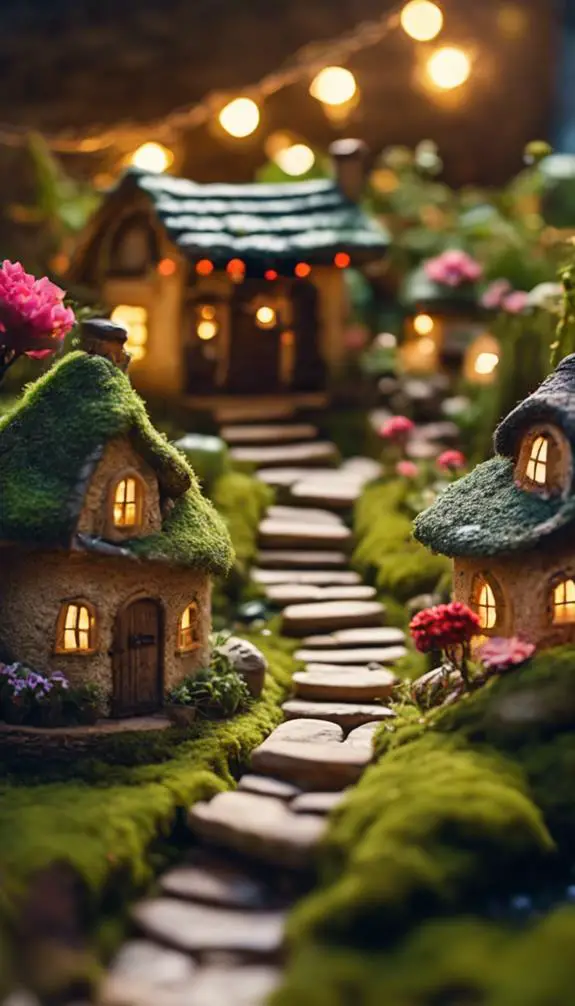
By designing a straw bale garden around a specific theme, you can create a unique and mesmerizing outdoor space that reflects your personality and showcases your creativity.
Theme gardens offer endless possibilities, from whimsical fairy gardens to modern minimalist spaces.
Consider the style and tone you want to achieve, then choose straw bales, plants, and accessories that fit your vision.
For a fairy garden, use smaller bales, delicate flowers, and miniature decorative elements.
For a modern look, opt for sleek, geometric bale arrangements and bold, architectural plants.
Incorporating Companion Planting

Companion planting, a technique where different plants are paired to enhance growth, health, and pest resistance, takes your straw bale garden to the next level.
By strategically placing complementary plants, you'll tap into companion benefits that boost plant synergy.
For instance, planting marigolds with tomatoes deters nematodes, while basil repels aphids and adds flavor to nearby veggies.
Planting beans with corn and squash creates a symbiotic trio, where beans provide nitrogen, corn offers shade, and squash spreads its large leaves to retain moisture.
Maintaining a Healthy Garden

As you've carefully crafted your straw bale garden with intentional companion plantings, it's now time to focus on maintaining the health and essence of your thriving ecosystem.
Establish a regular garden routine to guarantee your plants receive the right amount of water, nutrients, and pruning.
Monitor soil moisture and adjust your irrigation schedule accordingly.
As you navigate seasonal shifts, be prepared to adapt your care routine.
During peak growth, provide support for plants that need it, and trim back leggy growth to promote bushy development.
Dealing With Common Issues

You've invested time and effort into crafting a thriving straw bale garden, but inevitably, issues will arise that require your attention.
One common concern is pest infestations, which can be mitigated with effective pest prevention strategies. Regularly inspect your bales for signs of pests, and use organic controls like neem oil or diatomaceous earth to deter them.
Another issue is bale decomposition rates, which can slow down or speed up depending on factors like moisture and temperature. Monitor your bales' condition and adjust your watering schedule accordingly.
Extending the Garden Season
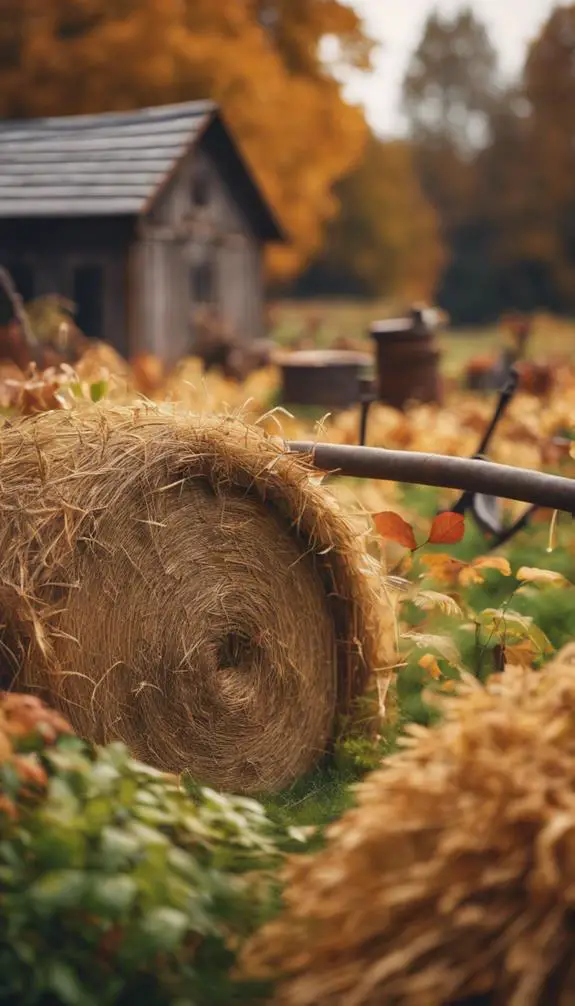
By carefully managing your straw bale garden, you can extend its productive life beyond the typical growing season.
To achieve this, employ season extenders like cold frames, which trap warmth and protect your plants from frost. These structures can be as simple as a wooden box with a transparent lid or as complex as a polyethylene-covered tunnel.
By incorporating cold frames into your straw bale garden, you can enjoy a longer harvest period and even grow cool-season crops like kale and spinach during the winter months.
Additionally, consider using row covers, mulch, and other techniques to further prolong the growing season.
With careful planning and management, you can reap the benefits of your straw bale garden year-round.
FAQs
Can I Use Straw Bales That Have Been Rained on or Gotten Wet?
You can still utilize wet straw bales, but it's vital to assess their dryness first. Perform bale dryness tests, like the squeeze or kick test, to guarantee they're not too damp, as excess moisture can hinder decomposition and plant growth.
How Long Does It Take for Straw Bales to Break Down Completely?
You'll observe straw bale decomposition unfolding over 1-2 years, depending on factors like moisture, oxygen, and microbe activity, with the bale's longevity influenced by these conditions, ultimately determining its complete breakdown.
Are Straw Bales a Good Option for Gardening in Small Spaces?
When you're tackling urban gardening in cramped spaces, you're probably prioritizing space efficiency. You'll find that straw bales offer a clever solution, allowing you to maximize vertical growing areas while minimizing footprint, perfect for innovative, small-scale cultivation.
Can I Add Manure or Compost to the Straw Bales for Extra Nutrients?
You can supercharge your soil by adding manure or compost to your bales, which will provide a significant nutrient boost through soil conditioning, releasing nutrients as microorganisms break down the organic matter, creating a fertile haven for your plants.
Will Straw Bales Attract Rodents or Other Unwanted Garden Pests?
You'll want to ponder implementing pest control methods, like rodent deterrents, as you set up your garden, since attractants like food and shelter can draw unwanted visitors; strategically place repellents and barriers to minimize potential issues.
Conclusion
You've successfully transformed straw bales into a thriving garden, teeming with life and productivity. By following these straw bale garden ideas, you've created a unique growing space that's both functional and visually appealing. With careful maintenance, your garden will continue to flourish, providing a bountiful harvest and a sense of accomplishment. As you enjoy the fruits of your labor, consider experimenting with new crops and techniques to take your straw bale garden to the next level.


